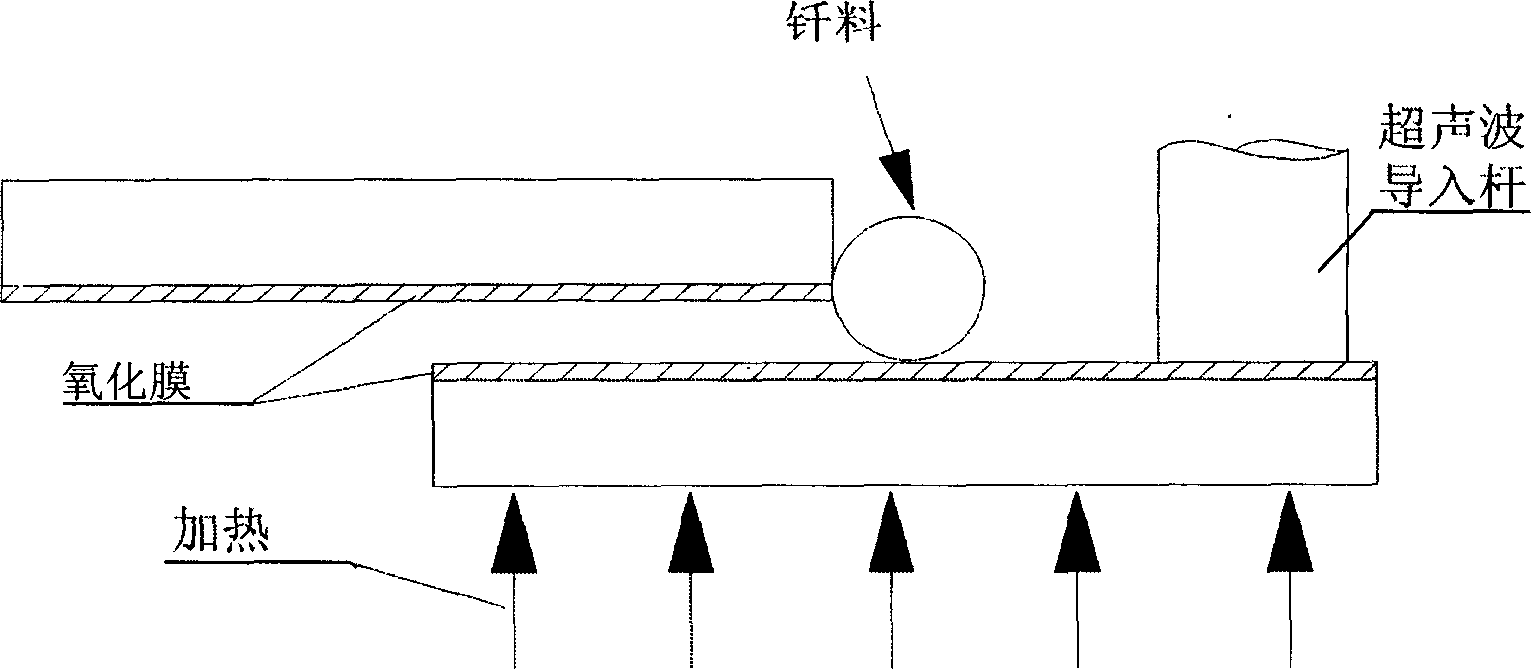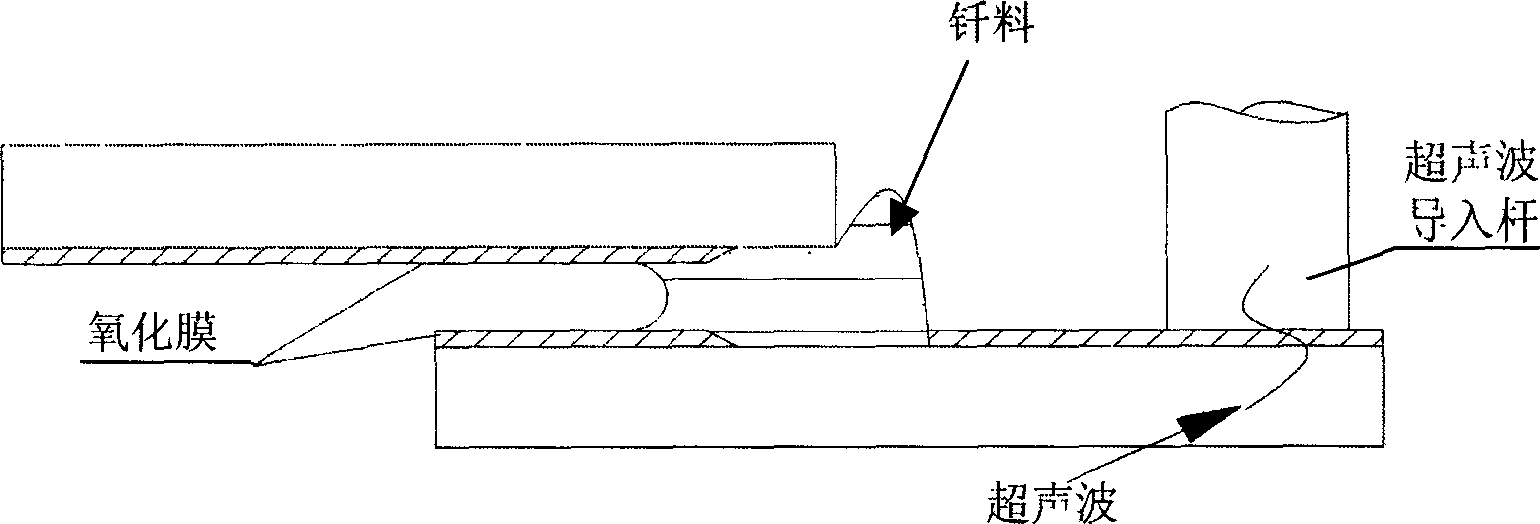Aluminium base composite material ultrasonic wave fine welding method
A technology of aluminum-based composite materials and welding methods, which is applied in welding equipment, non-electric welding equipment, metal processing equipment, etc., and can solve problems such as high sensitivity, limited joint strength, and high requirements for surface roughness to be welded
- Summary
- Abstract
- Description
- Claims
- Application Information
AI Technical Summary
Problems solved by technology
Method used
Image
Examples
specific Embodiment approach 1
[0012] Specific implementation mode one: (see Figure 1 ~ Figure 4) The method of this embodiment is realized according to the following steps: 1. Polish the surface of the workpiece to be welded with 400# sandpaper, then carry out ultrasonic cleaning in acetone, after the weldment is dried, adopt the lap joint mode to weld the aluminum matrix composite material The weldment is clamped on the fixture, and the gap between the upper and lower weldments is controlled between 10 and 300 μm; 2. Place solder on the side of the lap joint; 3. Heat the weldment and solder to reach the welding temperature to melt the solder and reach the holding time Finally, stop heating; 4. Apply the ultrasonic introduction rod to the surface of the weldment with a pressure of 0.1-0.3MPa; 5. Apply ultrasonic vibration to the weldment. The ultrasonic time is 0.5-15s; 6. After the ultrasonic vibration is over, remove the ultrasonic introduction rod and let the weldment cool naturally. The aluminum-base...
PUM
 Login to View More
Login to View More Abstract
Description
Claims
Application Information
 Login to View More
Login to View More - R&D
- Intellectual Property
- Life Sciences
- Materials
- Tech Scout
- Unparalleled Data Quality
- Higher Quality Content
- 60% Fewer Hallucinations
Browse by: Latest US Patents, China's latest patents, Technical Efficacy Thesaurus, Application Domain, Technology Topic, Popular Technical Reports.
© 2025 PatSnap. All rights reserved.Legal|Privacy policy|Modern Slavery Act Transparency Statement|Sitemap|About US| Contact US: help@patsnap.com



